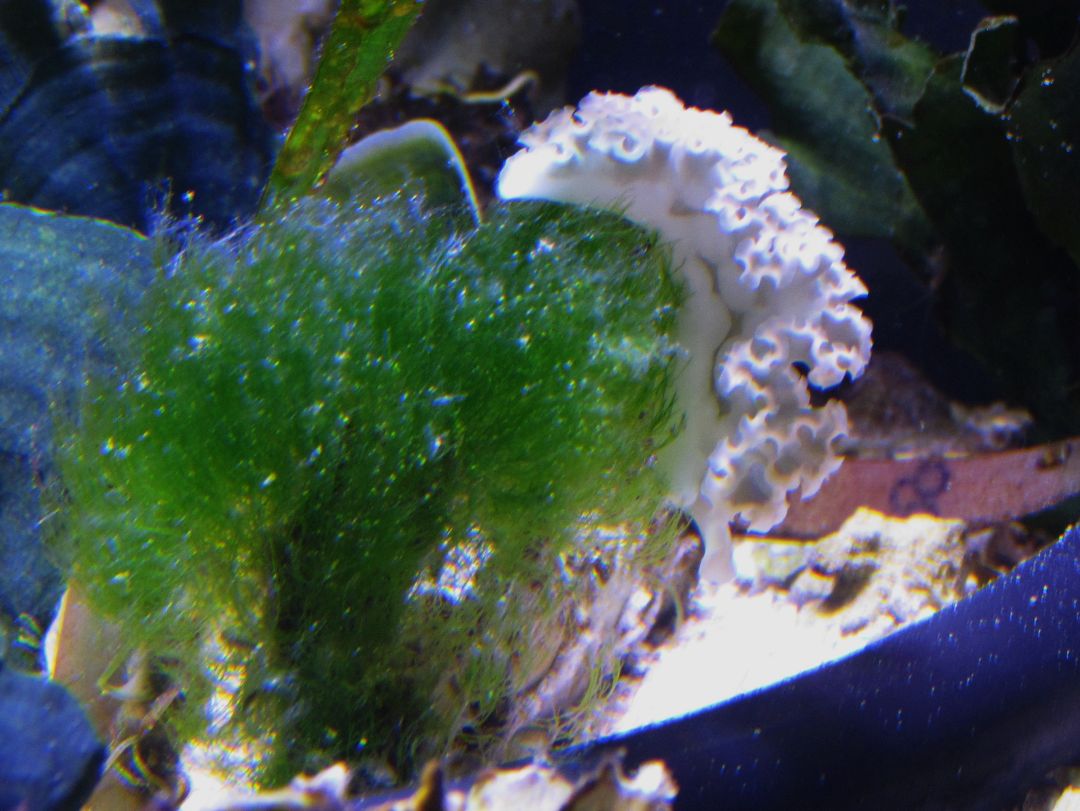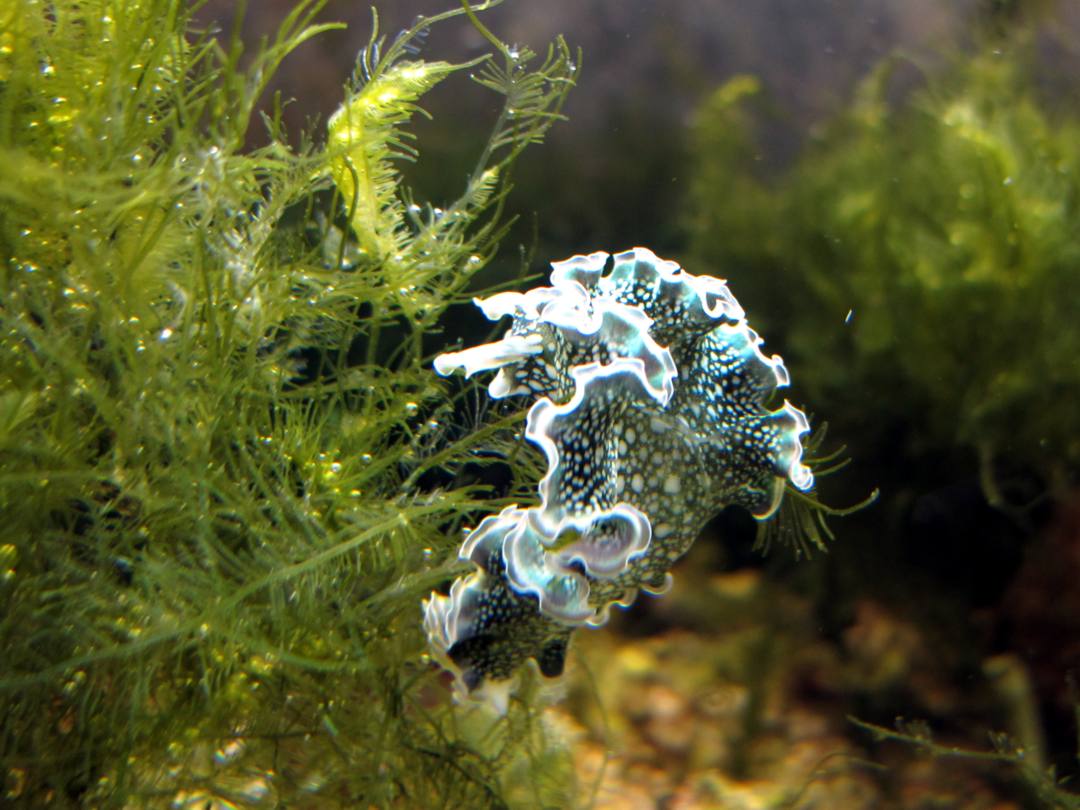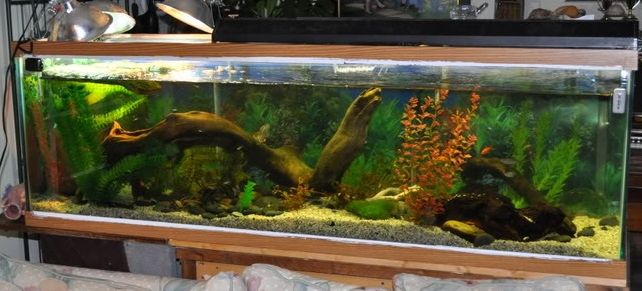-
Posts
3,408 -
Joined
-
Last visited
Content Type
Profiles
Forums
Gallery
Events
Store
Posts posted by mogurnda
-
-
If it's HDPE, I would worry a bit about it becoming brittle and cracking over time.
-
Is there supposed to be a photo here?
-
I know a lot of folks are down on hermit crabs. I was for a while too, but they really seem like little workers getting everywhere taking care of detritus. Also good garbage disposers when something dies in the tank.
I still use hermits. I tried to get a variety of snails, but my tank is so small now it's not possible.
I still have hermits as well (in my non-slug tanks), but I just keep in mind that many species will have no hesitation to eat snails, especially if the shell looks particularly suitable. There were battles raging on the boards years ago, with some screaming hermits are "never reef safe." Like most things, the story is more nuanced. The Mexican red legs are still my favorites for dealing with hair algae outbreaks in small tanks, but they are also untrustworthy with snails.
-
These charts always seem pretty random. A few comments based on keeping a lot of snails and growing a lot of algae.
I have two turbos, one is about 11 years old, and they have been good for diatoms, turfs and hair algae. Once hair algae gets beyond a certain length, nothing except an urchin will touch it. The reputation turbos have for bulldozing is well-deserved, so my frags are securely epoxied in place.
Astreas have always done well for me, and do a great job of general film removal. As far as I can tell, they will not touch hair algae.
I have tried Trochus several times, and they have never lasted more than six months, regardless of how I acclimate them.
Ceriths should have sand to burrow into, and are viewed as food and shelter by hermits. They are the major crew in my slug tanks, and do a great job on the glass, along with cleaning the debris and algae off the macroalgae without eating the macros themselves. Do not touch hair algae, which is good for me because they will not compete with the slugs.
Another general comment is that people tend to way overload their tanks with the stupid "cleaning crews" that vendors put together. Next thing you know, you have snails dying of starvation and feeding an algae bloom.
-
Hi Jessica,
My tank fits your criteria, and the plumbing is pretty darn simple and quiet. It is a modified coast to coast, and not a Herbie, though. I will be around most of this weekend, if you want to pop down.
-
Thanks for the input Tom. I can ponder while I wait for a few more fittings to arrive.
-
Since they're all interconnected, won't it all balance out due to circulation?
If I just loop through the sump, then some fraction of the cooled water will be sent back to the chiller. If I send it to the tanks first, it all goes to where it's needed. I am not really sure if it makes much of a difference.
-
Your post made me rethink the plumbing. Originally, it was going to loop into and out of the sump, but it seems wasteful to mostly be chilling the sump. My current plan is to plumb it into the line that goes to the top two tanks, which then flows through one other tank to the sump. That would deliver more cool water to the tanks that need it, but will add head pressure. I think it's a good tradeoff.
-
Cool turtle tank. My first tank was a 10 gallon metal frame tank with baby red-eared sliders. I bet your turtles were a lot happier.
-
30 years salt, 45 years fresh, usually with multiple tanks at any given time, so somewhere just short of infinity.
-
I'm not sure if this is exactly true: If you're pumping from a sump, then there's more energy used than if you were pumping in a sort of closed-loop fashion where you don't have much head pressure to overcome.
I'm not sure if I understand this. I will be pumping from the sump to the chiller either way, so what would be the difference? To be clear, the system current has 3 tanks and a sump, with a 4th coming on-line soon, so chilling any single tank would not work.
-
Thanks, Tom. I suppose you're right that leaving the feed on is smart. I will probably just hook up a line from the return pump, so it should be even less than a maxijet.
-
My primary slug colony is in my office, which is usually a good place for it. However, a few times a year, the facilities people shut off environmental controls, sometimes on purpose and sometimes by accident. This almost always happens on weekends or holidays, which means I only catch it if I have to be in for some reason that day and find myself in a sweatbox at my desk.
So far, I have not lost any livestock, but it is only a matter of time. I got an excellent deal on a chiller from a fellow WAMAS member, and would like to hook it up in case of emergency. It will be controlled by the AC Jr that currently runs things, and I will upgrade to an APEX once I convince IT that it's safe to allow my system to access the internet.
Here is the question: how do I hook it up to minimize energy use during the 98% of the time the chiller is not needed? Should I continually circulate water through it, and only have the chiller turn on when the temperature gets too hot? Can I leave the feed pump off when the unit is not in use? Does anyone else do this kind of thing?
-
Nope. If you put one into a normal reef tank, it will be dead within a week. If they were smart, they would stay on the food plant and not wander around. They are not smart.
-
Ive read that the slugs like to float around. Is that true?
-
Sweet !!!! Looking good
It's finer and brighter green than the stuff Justin had. Maybe a different species.
I have some but it would be a bit of a haul for you to come pick it up.
It may be time for a road trip at some point.
-
A quick and dirty photo of one of the crispata enjoying fresh Bryopsis.

-
I have some growing if you want it.
And it is indeed beautiful. Thanks for the algae!
I thought I remembered something like that, and with a little web research on my own I'm pretty sure that's what it is. How would you suggest getting what I can collect to you? Will you be at the meeting next Saturday?

I would love more algae, but have a conflict with the meeting. I am in the area though. Will PM about possibly meeting up before or after.
-
I'm trying to remember how to distinguish bryopsis from other GHA varieties, but I've got one tank that's (unfortunately) got a bumper crop of something at the moment, and you're welcome to all you want!
Bryopsis is soft, but usually very feathery. Almost like Caulerpa when it is growing well. Below is a photo from an earlier batch.

-
Great! Will try to arrange a pickup.
-
Still looking. Don't be embarrassed, PM me and I won't tell that you have an infestation.
-
Bingo! Mystery solved. Of all the slugs I looked at, none seemed quite right, but this has all the right features. I wonder if you can do a SWAP with these guys.
-
His Rock is saturated with phosphates. No matter what critter you add it will continue to grow back and critters increase bio load causing more problems. Yea critters will mow the lawn. But the grass is still there growing because it has unlimited nutrients. GFO, aggressive skimming and spot feed fish instead of broadcast feeding to ensure all food gets eaten.
I have tamed a few serious blooms, and spend a lot of my time trying to grow hair algae to feed my slugs, so I would disagree somewhat. I agree that the "cleanup crews" sold by online suppliers are way too big, but a combined approach of grazing and nutrient control will solve the problem if you give the system time to get back into balance. The mistake I see a lot of people making is getting impatient and jumping from one solution to the next without giving anything a chance to work. Cooking the rock, throwing everything away, adding a chaetomorpha reactor will all work, it's just a matter of how you want to approach the problem.
Urchins don't eat hair algae.
I am shocked to see this. Both variegated and rock boring urchins have chowed it down to bare rocks in my tanks. What species was it?
-
Is he in a hurry? If he can get the nutrients down a bit and add a few urchins and turbos (not too many), the problem will subside in a few months or maybe less.

.jpg.7bfaca13382600fc0d1da29d2e298192.jpg)



Bio filter slag
in New to the Hobby
Looks like you have a good bacterial bloom on your hand. The filter will work better if you rinse the media so they don't clog up. If you're worried about killing the bacteria, rinse with tank water after your next water change.